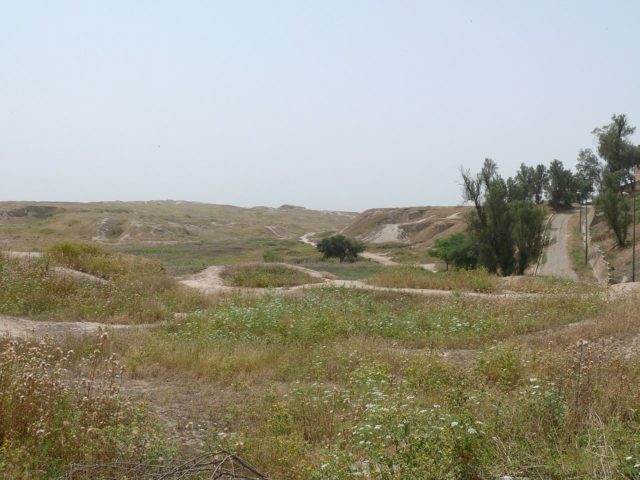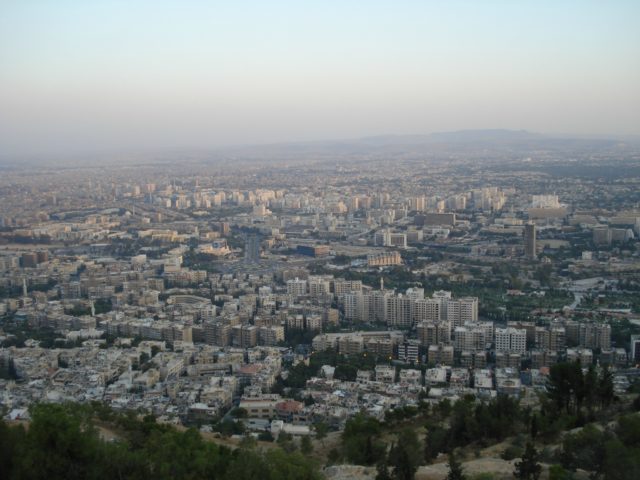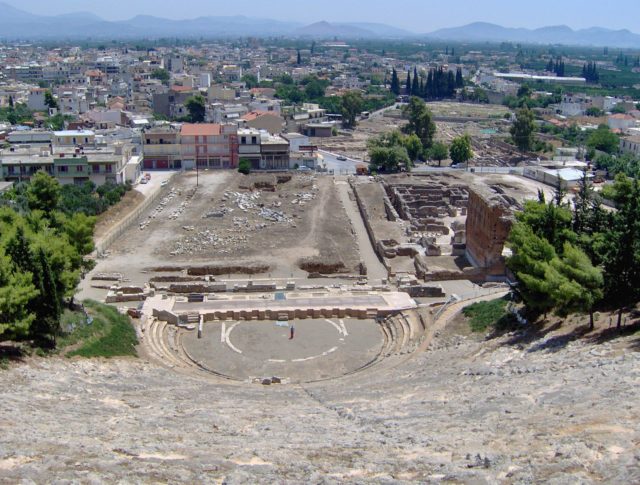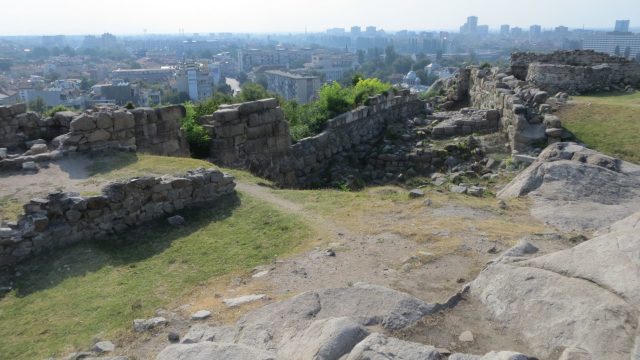As with many other issues in the science of history, identifying the world’s oldest continuously inhabited city is a difficult and problematic process.
There are many unknown and variable elements in this quest and sometimes myths and legends interfere with reality and facts.
Since this question was first raised, there have been countless claims and counterclaims, architectural digs and evidence that go in favor (or not) of a certain city.
A big problem in the historical search for the oldest continuously inhabited city is the methodology by which a settlement is designated as a city.
According to some scholars, the crucial moment of defining comes when a settlement grows from self-sustainability to trade, and others think that it’s when it develops infrastructure such as plumbing.
Another debate is held about whether a city could exist without agriculture.
With all things considered, it’s virtually impossible to determine the world’s oldest city, because, with every discovery, the title shifts from one city to another.
For example, Mark Twain once claimed that Varanasi (Benares) “is older than history, older than tradition, older even than legend, and looks twice as old as all of them put together.”
Later it turned out that Twain was wrong and based his claim on a legend that says it was established by Lord Shiva in 3,000BC – it was actually founded 2,000 years later.
At the moment that title belongs to Aleppo, but the other cities are not far behind it.
Here is a list of some of the oldest cities that have been continuously inhabited. It is noticeable that most of them are located in western Asia, or in the Mediterranean zone.
Aleppo

Aleppo, a magnificent city, the largest in Syria, and recognized as the oldest continuously inhabited city in the world today.
Once it was the biggest rival of Cairo and Constantinople, and since research for the oldest city in the world has begun, it has been one of the top choices.
It has been proven that the first settlements here can be traced back to 6,000BC (digs in Tallet Alsauda), but also, some more recent excavations just north of Aleppo revealed that nomad made permanent camps on this location 5000 years before the first settlement.
Not much is known about the Ancient layers of Aleppo because the modern city lies directly over the ancient one.
Aleppo lies on the left bank of Queiq River. It was originally surrounded by a circle of eight hills which were enclosing a hill in the center on which an acropolis-shaped castle was standing.
The radius of this ancient city was about 10km.
The existence of the city was first mentioned in a record from the third millennium BC, as the capital city of a kingdom called Armi.
Aleppo represented an important city of trade up until the opening of the Suez Canal, but even then it still shined as one of the cradles of civilization.
Today, this marvelous city that once stood proud and mighty is devastated by a terrible war.
Huge parts of the ancient core of the city were completely destroyed during deadly clashes between pro-government forces and the rebel forces of the Free Syrian Army that began in 2012.
The fightings still continue and from day to day, even more of the precious heritage of this city gets erased from the face of the world.
Susa

Since the Proto-Elamite period (time of the oldest civilization on the territory of modern-day Iran), Susa was probably the most important city in the Ancient Near East.
Even today, this piece of land is still settled with people, but the name has changed a bit; it is now an Iranian town called Shush
The city of Susa is mentioned even in the oldest Sumerian records.
One of the Sumerian texts speaks about its inhabitants as followers of Inanna (Ishtar), the patron deity of the legendary city of Uruk.
The first signs of a human habitat here is a Neolithic Village dated to around 7000BC.
Pottery (which is a sign of urban civilization) has also been found and dated to around 5000BC.
Susa among the other ancient cities is also considered as one of the oldest settlements in this region.
Foundations of a huge 15 hectares settlements have been found here from around 4935BC.
Byblos

This ancient Mediterranean city, with an interesting name, which still thrives in modern day Lebanon, also deserves a place on the list of the oldest continuously inhabited cities in the world.
It is believed that the first settlement here appeared during the Neolithic period, between 8,800 and 7,000 BC.
Philo of Byblos (64 – 141), an antiquarian writer born in Byblos, went as far as claiming that Byblos is the oldest city in the world and that it was founded by Chronus himself.
Unfortunately, this claim was quoted from a pre-Homeric Phoenician priest called Sanchuniathon, whose existence is not fully proven.
Chronus has maybe nothing to do with this city, but evidence that it has been continuously inhabited since 5000BC are pretty strong.
The first city-like settlement here appeared in the third millennium BC; house foundations from this era are still visible today.
Although today, the official name of the city is the Arabic name Jubayl or Jbeil, it was known as Byblos in ancient times.
Byblos was an important center of trade and most of the papyrus that was shipped to the Aegean, came from here; that is why the Greek word for papyrus is “bublos.”
The word “Bible” is derived from this word and its literary translation would be “the Papyrus book.”
Modern day Byblos (Jubayl) is a prosperous city in which the ancient and the modern are mixed together.
Damascus

For a long time, Damascus was credited as the oldest continuously inhabited city in the world, until it was proven that Aleppo was an important city much longer than Damascus.
There is no strong evidence of a permanent settlement in Damascus up until the 2nd millennium BC.
The lack of evidence for a continuous settlement doesn’t mean that Damascus is out of the game. After excavations at a location called Tell Ramad, on the outskirts of the city, were done; it was proven that the area of modern Damascus was populated since 9,000BC.
Like many of the cities of the Levant, Damascus is as ancient as it gets and full of cultural and religious heritage – a birthplace of civilizations.
Today, Damascus is the capital of Syria, and slowly becoming larger than Aleppo because of the decline there caused by the ongoing war.
Argos

Located in the Argolis region of Peloponnese, Greece Argos is another example of a continuously populated city throughout thousands of years.
Its name is as ancient as its earliest foundations, and it has been translated in several different ways.
The commonly accepted theory is that the name comes from the Pelasgian language (the one used by ancient Greek predecessors ) and it means “plain.”
Another theory connects it to the legendary king called Argos (son of Zeus) who renamed the city from its old name: “Foronikon Asty.”
The oldest settlement here is late Neolithic and its 7000 years old. The city of Argos was colonized by the Pelasgians in those ancient times, and since then the city still lives, at the same location.
Athens

Probably the most important and well-known city in the western world, Athens still captivates us today with its architecture and history.
Modern Athens is the largest city in Greece, and the center of the region called Attica. The recorded history of this precious gem among cities can be traced 3,400 years in the past, but humans dwelled here probably since the 11th millennia BC.
Athens, also known as the cradle of Western civilization, is widely accepted as the birthplace of democracy and a major art, science and philosophy center since the ancient times. Athens housed some celestial people such as Aristotle and Plato and it shaped European Culture and Politics as we know today.
The oldest Traces of human existence in Athens are found in the Cave of Schist (dated between the 11th and 7th millennia BC)
It is proven that Athens has been continuously inhabited for at least 7,000 years.
Sidon

Sidon (now in modern day Lebanon), is another legendary city on the Mediterranean coast.
There are traces of life here since the early Neolithic period, and later (as the oldest) it became the center of the Phoenician civilization.
Sidon transformed itself into a huge trade center in the Mediterranean.
A colonizing party that sailed from Sidon founded another important city, the city of Tyre, which also became magnificent and they even rivaled each other.
Plovdiv

Modern-day Plovdiv is the second largest city in Bulgaria, but probably the oldest one, and not only in Bulgaria.
Archeologists have found evidence of Neolithic human settlements here that existed in the sixth millennium BC.
Further excavations proved that continuous human dwellings in Plovdiv exist since 4,000BC.
During the eight millennia of history in Plovdiv, the civilizations that lived or passed there left a 12m-thick layer of artifacts for the future generations.
